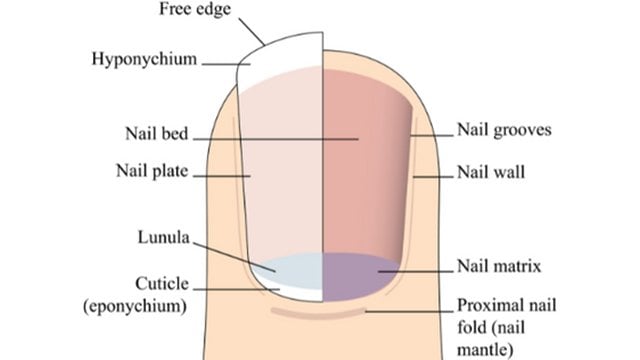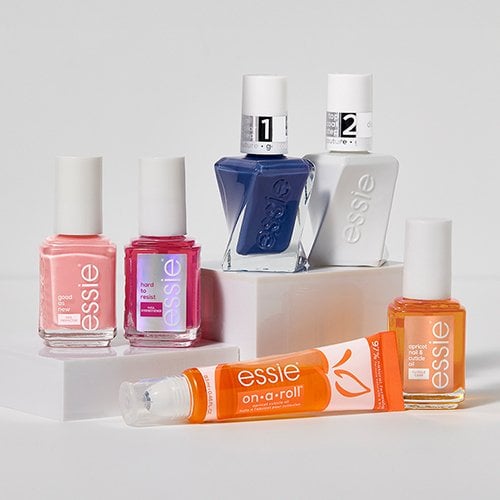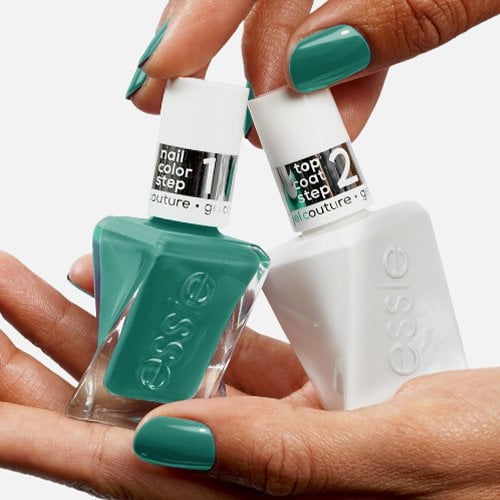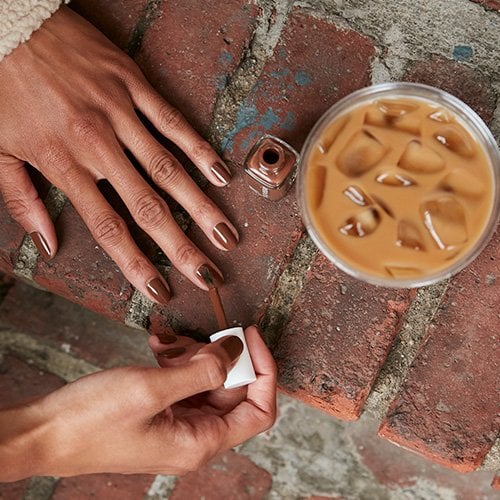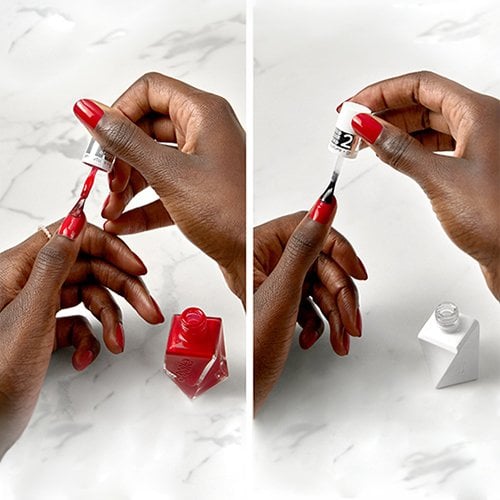what are cuticles?
knowing your cuticles also means brushing up on cuticle lingo:
cuticle: the watertight seal near the base of the nail.
nail bed: the pink area under the nail plate that extends from the lunula to the hyponychium.
nail plate: the actual fingernail made of translucent keratin.
perionychium [per-ee-oh-nik-ee-um]: the skin surrounding the sides of the nail plate.
lunula [loo-nyuh-luh]: the white, half-moon shaped area at the base of the nail.
hyponychium [hy-po-nik-ee-um]: the skin just under the free edge of the nail.
cuticle care at home
now that you know how crucial cuticles are in maintaining nail health, let’s take a look at the tools and techniques that make cuticle care at home a breeze. setting up a great cuticle care routine is easy, and your nails will love you for it!
-
cuticle prep tools
- 1 cuticle pusher to gently push back the skin. a stainless-steel pusher with a beveled or square tip is the best option.
- 2 cuticle oil to soften and condition. check out our essie cuticle oils.
- 3 cuticle nippers (aka cuticle trimmers) to remove excess cuticles. (regular nail clippers won’t do the trick.)
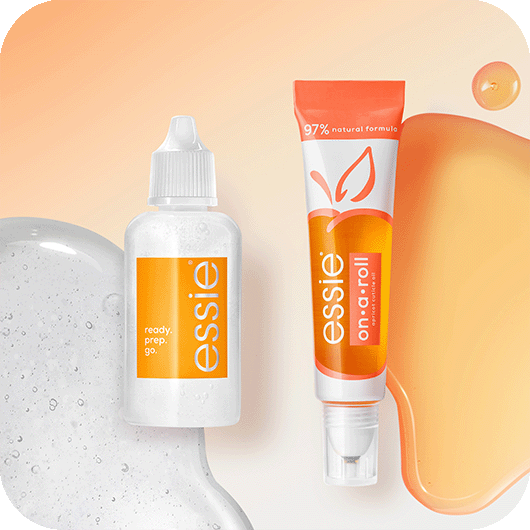
how to prep cuticles
before trimming your cuticles or painting your nails, you need to prep your cuticles. always remember to be gentle with your nails and cuticles! a damaged or nicked cuticle increases the risk of letting bacteria and dirt into your skin, so go slow and easy. for more information on proper prepping for any manicure, check out our manicure prep guide.
strip and soften
push back cuticles
push back cuticles
trim cuticles
trim cuticles
trim cuticles
clean nails before applying polish
cuticle aftercare
cuticle care at home doesn’t end after your manicure because they constantly require hydration to keep that protective barrier supple and nourishment for health. this maintenance depends on using a fast-absorbing cuticle oil at least twice a day to prevent cracking and dryness. essie makes it quick and easy with brush-on apricot cuticle oil and it’s to-go companion on a roll cuticle oil in a cute roll-on tube.
cuticle repair tips
activities like gardening and home repair can be hard on cuticles. that’s when you need to reach for your cuticle care & repair kit and give them some extra attention. be sure this cuticle first aid box includes nourishing essie cuticle oil and/or on a roll apricot oil. they work wonders for getting your cuticles back in shape!
